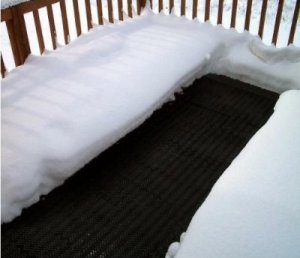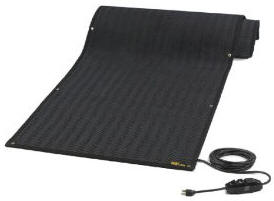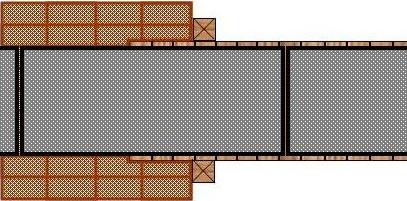In Northern climates where snow and ice are common in winter months, wheelchair ramps must have the snow and ice removed, to be of any value.
Electric heating mats, as shown in Figure 1 and 2, are now available that will efficiently melt snow and ice from wheelchair ramps and landings.

Figure 1 - Heating mat on wheelchair ramp landing

Figure 2 - Wheelchair ramp heating mat
The installation of these heating mats requires consideration of the heating mat's and wheelchair ramp's dimensions, electrical outlets (receptacles) and switches. But there is another important consideration that the designer and/or builder of the wheelchair ramp must consider and that is where the water from the melted snow and ice will go.
Wheelchair ramps by nature have a slope that will direct the melted snow and ice down towards the lowest point of the ramp.
Because of this, the wheelchair ramp designer must consider how they will direct the melted snow and ice from the ramp and into an area that is not part of the pathway for the pedestrians or individuals in wheelchairs.
Avoiding a hazardous area is accomplished in three manners:
- Installing the heating mat the full length of the walkway and the wheelchair ramp. Making sure that the area where the wheelchair ramp meets the walkway is overlapped with a single mat, as shown in Figure 3.
- Operating the heating mat until all moisture has been evaporated,
- Applying a slight rise towards the middleof the walkway, to provide drainage to the side, as shown in Figure 4.

Figure 3 - Heating mat overlaps point where wheelchair ramp meets walkway

Figure 4 - Center of wheelchair walkway raised
The rise should be between 1/4 and 3/8 inch. A rise of this height will not present any mobility problems to the wheelchair and will direct any excess water to the sides of the walkway.
Additional information on wheelchair ramp construction
